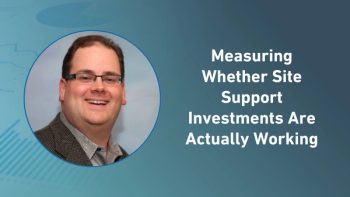
Building Partnerships to Better Serve Underrepresented Trial Communities
In this video interview, Caroline Potts, general manager of sites and patient services at Medical Research Network (MRN), explains why trial inclusivity requires shared responsibility across sponsors, CROs, sites, and advocacy groups.
In a recent video interview Applied Clinical Trials,
ACT: What infrastructure or partnerships are most critical for empowering sites to better serve underrepresented communities in clinical trials?
Potts: I think that everyone has some skin in the game on this one. I think that it shouldn't just be the site's responsibility. It should be the responsibility of all key stakeholders to come together and understand what is needed, what will drive success in that particular site community. As well as that, it's about listening to the advocacy groups in that community as well. I don't necessarily mean going to an event, talking about what a clinical trial is, and then expecting that information to resonate. It's about being a presence in the community, not just the site. It's about having people from the sponsor organization to help answer those questions of, ‘Why did you focus on this particular side effect, or this particular part of my condition, when actually what I find is this part is more debilitating.’ It's about having two-way, ongoing communication, rather than, ‘This is what happens in stage two of a clinical trial.’ I'll be honest with you, Andy, I've worked in clinical trials for 20 years, and my family still doesn’t have a clue what I do, and that's my nearest and dearest. Why would we expect a community to understand, after just one conversation, what it means to be part of a clinical trial? There has to be a real change in culture. I think for me, I think the example that I sometimes use when I'm talking about this is what happened in the United Kingdom, about 100 years ago now, but it was probably about 20 years ago now. There was a real move to help patients with chronic conditions feel empowered that when they were sitting in front of their doctor to ask the questions that they wanted to ask, it wasn't just the doctor handing information and relaying information to the patient, that it should be a two-way communication. Patient education leaflets were developed. There were programs to help patients feel empowered, even simple things like leaving a notebook and a pen in the waiting room so patients can just jot down the things that they wanted to remember to say to their clinician. Honestly, if there's an industry that would absolutely benefit from something similar to that, it would be the clinical trials industry, in my opinion.
Newsletter
Stay current in clinical research with Applied Clinical Trials, providing expert insights, regulatory updates, and practical strategies for successful clinical trial design and execution.




